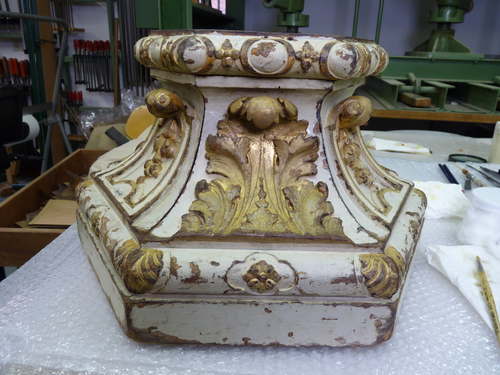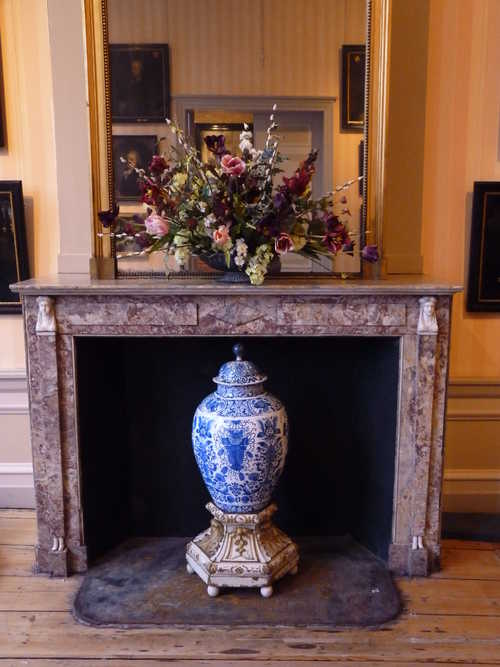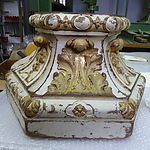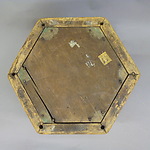Figure 7. – filmed detail of acanthus leaf during treatment
The woodworm damage was addressed by Anna by injecting a consolidating resin into the sponge-like wood. After that she cast the missing scroll in a rubber mould taken from one of the still intact counterpart leaves on the stand. Small adjustments were sufficient to make it fit. After this the epoxy cast was ‘gilded’ with mica pigments - a non-tarnishing type of gold imitation powder - and colour matched with water colours and cigar ash.
Figure 8. – acanthus leaf replicated
Figure 8. – acanthus leaf replicated
Turning the stand over we made another unexpected discovery; at the six corners we found drilled holes and in them remnants of wooden pins.
Figure 9. – view of underside
This was interpreted as evidence of the original feet which have now been lost. Some paint remnants on the underside gave an indication of their round upper contour. It was decided that although the exact shape was not known, wooden bun feet could be made up. It will help to conserve the vulnerable plinth of the stand and serves as a test case to decide on the right form and size . If needed it will at all times be possible to remove the feet again, as they are merely dry fitted in the old holes.
Figure 10. – stand in fire place at Bijbels Museum
Figure 10. – stand in fire place at Bijbels Museum




